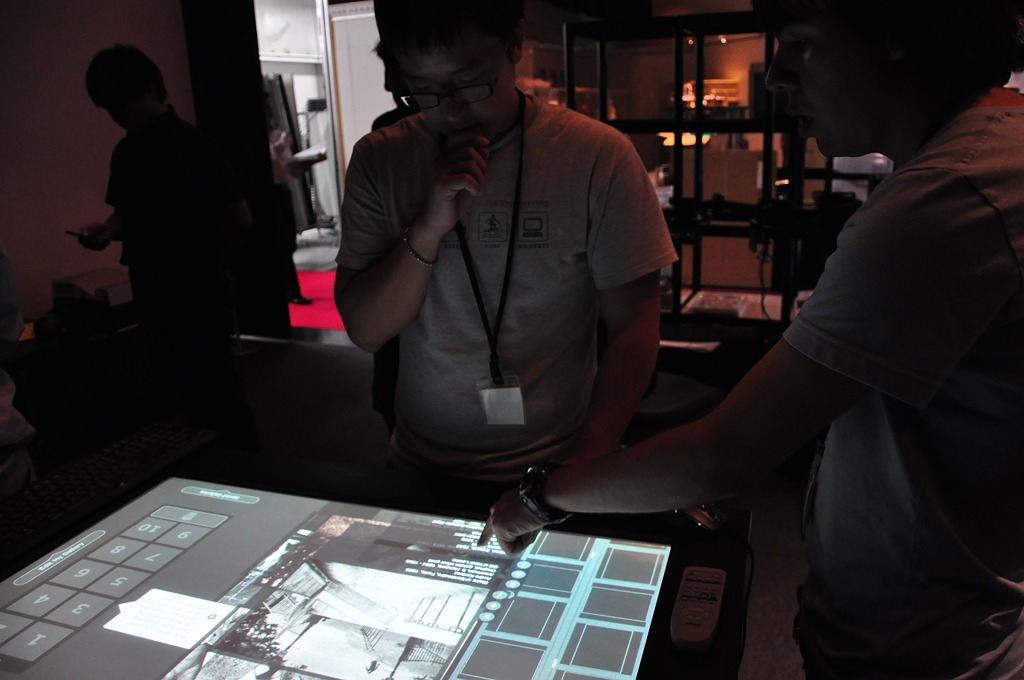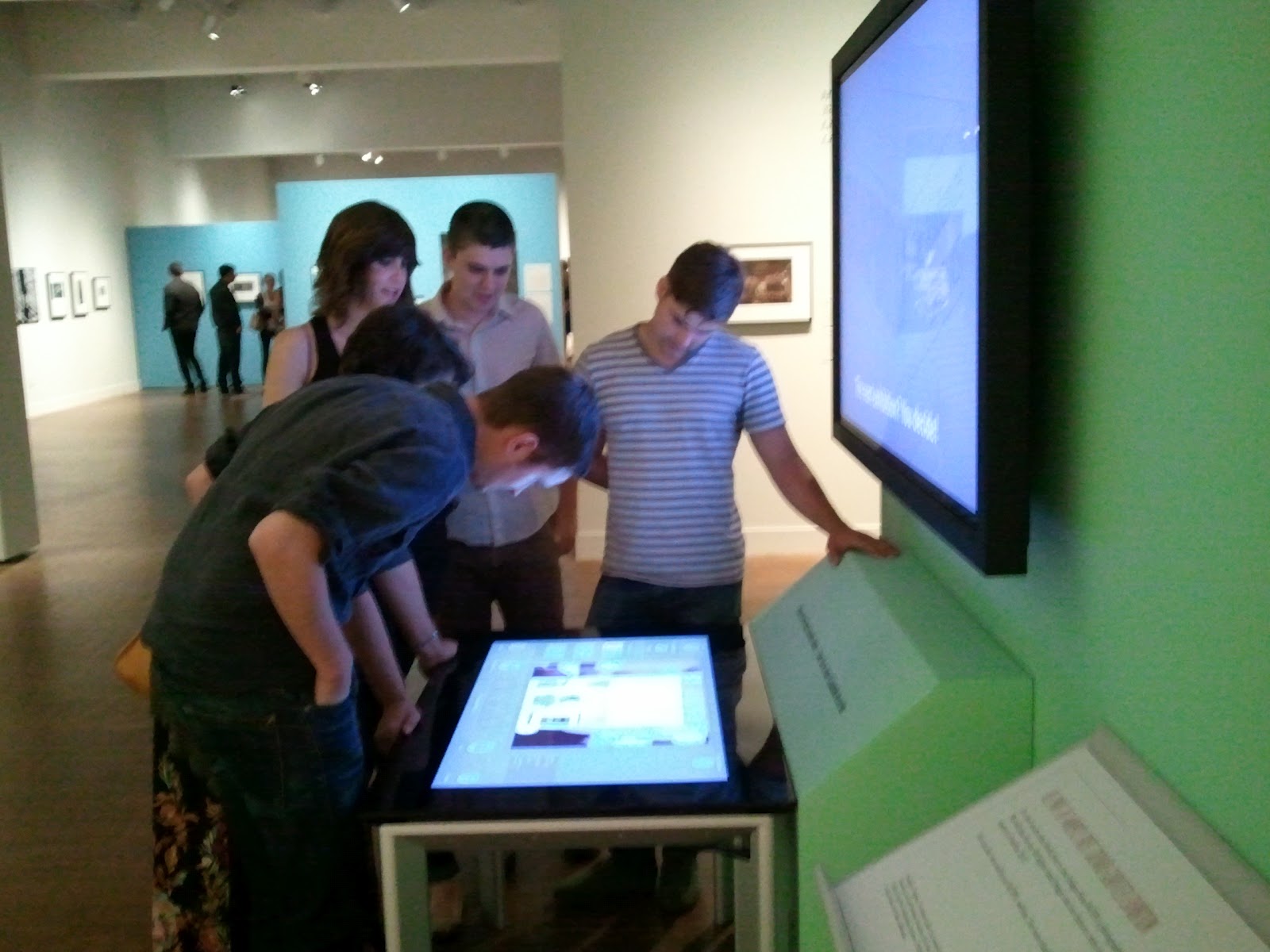
I attended the Media & Technology Committee’s MUSE awards ceremony at the AAM annual meeting in Minneapolis Saint Paul a few weeks ago. The award-winning projects illustrate a number of the cultural and technological trends CFM is tracking—gaming, augmented reality, the use of hand held mobile devices to create distributed experiences. Today, guest bloggers Wesley Hsu and Vivian Haga tell us about the My Gallery Interactive project, winner of the Honeysett & Din Student Award, which fits yet another the trends highlighted in TrendsWatch 2012—museums harnessing the wisdom and enthusiasm of the crowd.
The term “crowdsourcing” was coined by technologist Jeff Howe in the Wired magazine article “The Rise of Crowdsourcing” in June 2006, to describe the outsourcing of a task among a distributed group—the crowd. This form of outsourcing has since permeated the modern world, encompassing everything from search engine optimization to political approval. The museum field is no exception. The fact that Wikipedia is nearly as accurate as the expert-edited Encyclopedia Britannica draws attention to the value of the “wisdom of crowds.” With social media effectively gathering crowds by the millions, the potential for crowdsourcing is immense.
 |
| My Gallery Interactive in Osaka |
My Gallery Interactive is the San Diego’s Museum of Photographic Arts’ (MOPA) experimental foray into crowdsourcing. This is not the first time a museum has experimented with crowdsourcing (or crowd-curation, an emerging term in the museum world). The Brooklyn Museum of Art’s Click! exhibition in 2008 used a very similar model. However, this is Balboa Park’s first step into crowd curation and it is a pioneering project due to its international collaboration and its scale.
The project was a collaborative effort between the NSF-funded Pacific Rim Undergraduate Experiences (PRIME) program at UC San Diego, MOPA, and the National Institute of Information and Communications Technology (NICT) in Kyoto, Japan. One of us (Wesley) and fellow UCSD student Lance Castillo were sent to NICT’s labs to develop an interface for a touch-table display, utilizing NICT’s FTIR touch-table and fifty images from MOPA’s permanent collection. The interface encouraged users to interact with these fifty works and build their own gallery, which could be labeled with a title and author, and saved for viewing. These user-curated galleries were displayed live on a 6’ x 4’ tile-wall display of 24 monitors connected to the touch-table. The exhibit debuted at the Knowledge Capital Trial 2011 international technology exhibition in Osaka, Japan, which drew over 12,000 visitors.
The exhibit’s success attests to the importance of collaboration and visitor engagement. First, it illustrates the power of museums collaborating with university programs on experimental projects. There is a wealth of young talent in the student body of universities. If museums can tap in to that wealth, the benefits are countless. Contracting experimental work to a corporate vendor can be high-cost and therefore the financial risk will be high. Collaborating with students lowers the financial risk. And it is mutually beneficial–the real-world experience provides mentorship for the student, nurturing the skills of a future professional. In the case of My Gallery Interactive, the PRIME program also gave MOPA the opportunity to collaborate at an international scale.
With the recent economic decline, the visitor experience has become even more important. Visitors often regard museums (particularly fine art museums) as the experts and expect the museum-going experience to be a passive one. However, there is often a gap in the visitor’s experience of the museum and the curator’s interpretation of the museum. By shifting curatorial decision making towards the crowd, making an exhibit’s design a participatory experience, the gap between visitor and curator narrows and aligns, and the museum becomes a much more active experience.
 |
| Soapbox! in MOPA galleries. |
Lance and Wesley were both hired by MOPA as developers for the next phase of the PRIME/MOPA/NICT collaboration. Soapbox! The Audience Speaks, which debuted at MOPA this month, builds on the lessons learned from My Gallery Interactive. Soapbox! is an in-gallery exhibit that integrates the crowd-curation from an interactive touch table and web interface into a physical exhibit. Visitors now have the opportunity to vote in-gallery or online on which photos they would most like to see physically displayed on the walls in October 2012.
In the museum world, crowd-curation is still experimental and the assignment of quantitative values to works of art can certainly cause debate. Indeed the ubiquitous presence of the Web and all its implications (social media and crowd-curation included) is beginning to shift the infrastructure of museums. By taking a risk on an experimental project with students, Balboa Park created the opportunity to delve into these issues with its first technology-facilitated crowd-sourced exhibition. While crowd-curation may not be the ultimate future of museums, it certainly presents interesting and exciting possibilities.
Keep an eye on the M&T 2012 Muse Award page for a full description of the winning projects (which appear to be coming soon).









“hpthermalcamera.com/product/ “ As one of the leading manufacturers for long distance thermal imaging camera and infared laser night vision camera. Hope-Wish alwaysing focusing on customer’s requirements, providing professional services and high-tech cameras to protect national security and social stability.
We manufacture mainly three kinds of products which include thermal imaging camera, IR laser camera a